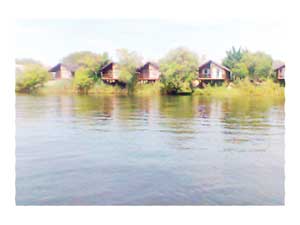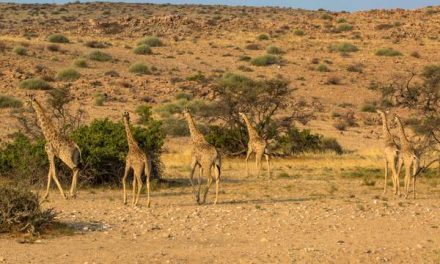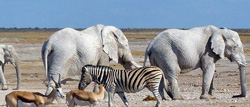
Conservancies experience development problems due to lack of resources

Kingston Lodge in the Kasika Conservancy area, attracts a lot of tourists from either side of the Chobe River.
According to Niita Iipinge, Deputy Director of Regional Programme Implementation in the Ministry of Lands and Resettlement, the impact of the development of conservancies differ from conservancy to conservancy.”You find that conservancies in the west such as those in Kunene region are big and have a high number of tourists visiting the area and on the other hand conservancies in the southern part of the country are relatively small and the development impact is slighlty lower,” Iipinge says.
Iipinge, who was based in the south and conducted a study on the Impact of Community – Based Conservancy on Community’s Livelihoods at !Khob !Naub Conservancy, says communities in the south are scattered hence the distribution of benefits is low.”Devidends of tourism and other forms of development is low in the south. These communities depend mainly on hunting for own consumption and culling,” Iipinge says. Other problems that could jeopardise the progress and future of a conservancy, according to Iipinge, include lack of financial resources, inadequate institutional and human capacity and negative attitudes of communities towards the conservancy concept.
According to Iipinge, some development projects are politically motivated, whether the projects are viable or not. She says in terms of southern conservancies, this could be the case because there are always claims from the public that the Karas Region is neglected in terms of development. “Adequate financial resources and transport should be allocated to conservancies so that the envisaged activities can be successfully implemented,” she says.
Iipinge says that there is a lack of effective coordination of activities which exists in many southern conservancies, thus government institutions that promote natural resources management in the region such as wildlife, forestry and water are working in the isolation. She says the current Community Based Natural Resources Management policies are wildlife oriented and therefore suggests that policies should be reviewed so that they could be more inclusive in order to be possibly known as Integrated Community Based Natural Resources Management (ICBNRM).
The Communal Conservancy Tourism Sector is now a dynamic and integral part of Namibia’s tourism industry, with 44 joint-ventures working with conservancies countrywide. This total includes 29 joint-venture lodges and campgrounds, four that are operating in principal without a formal agreement and 11 that are in active negotiations with Conservancies.There are about 26 parks and reserves that help to preserve and protect rare and endangered species in the country. The parks play an important role for conservation since almost half of all species in the country are of some conservation concern. The conservancies have helped to expand migration corridors and increase the perceived value of wildlife which has helped to mitigate human-wildlife conflict and increase economic development in ecotourism. Many wildlife populations are now on the rebound including black rhino, elephant, lion and cheetah.












































